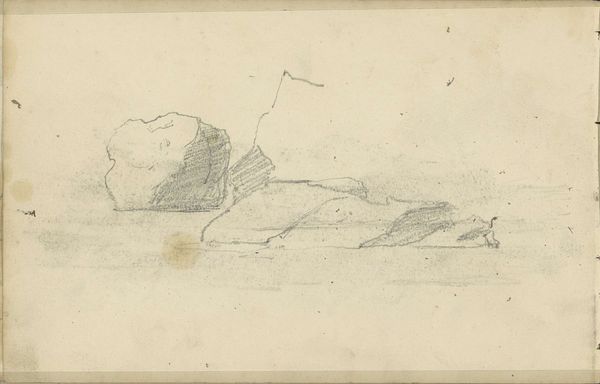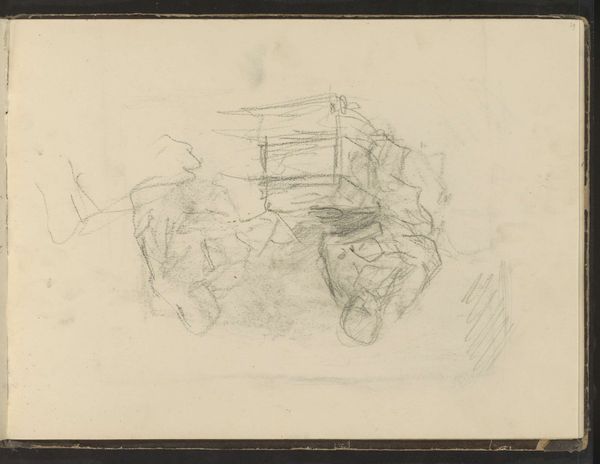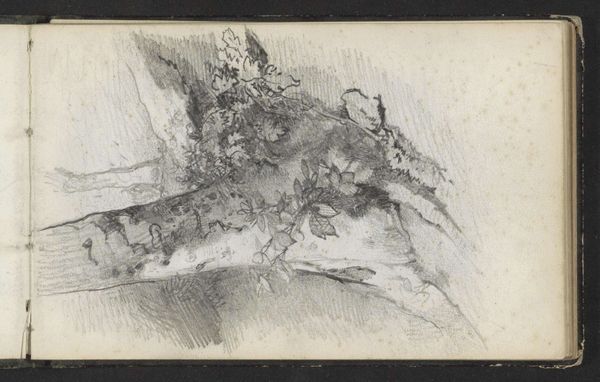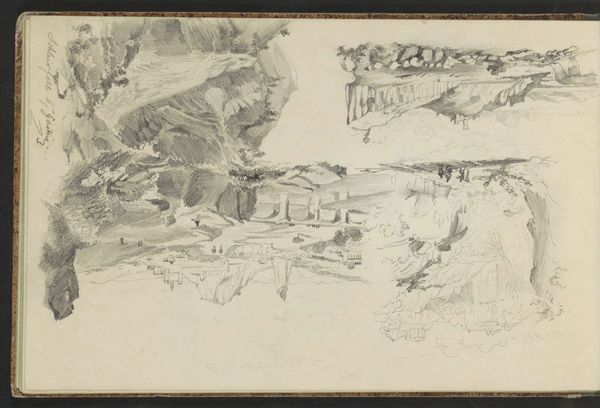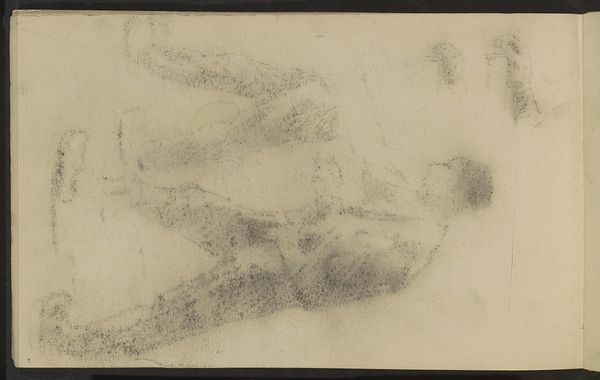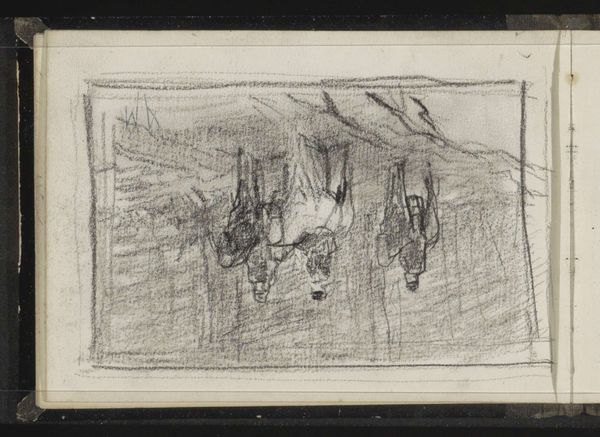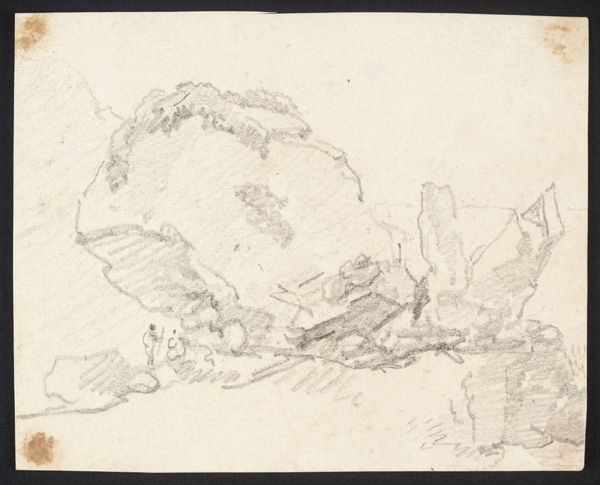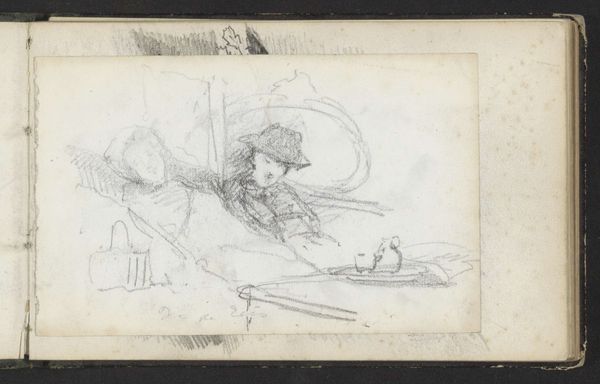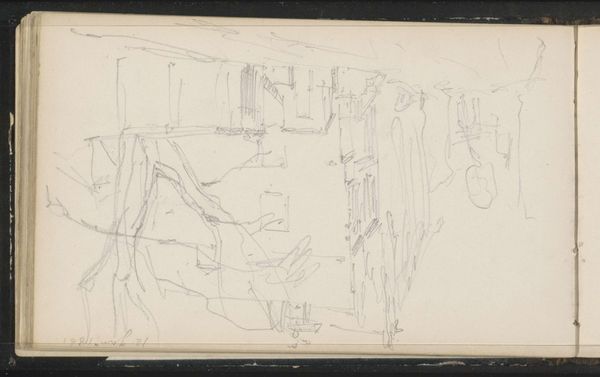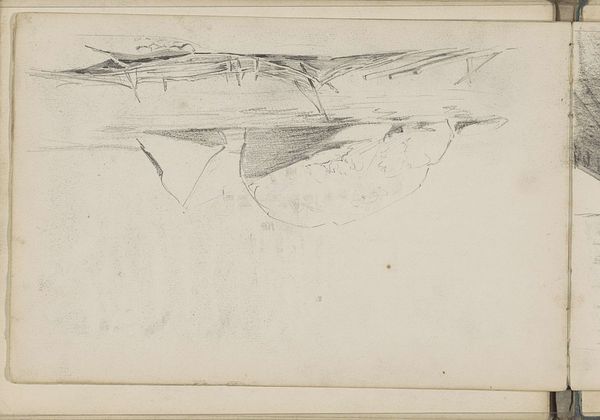
drawing, paper, pencil
#
drawing
#
landscape
#
paper
#
pencil
Copyright: Rijks Museum: Open Domain
Curator: Welcome. Here at the Rijksmuseum, we have before us a pencil drawing on paper by Maria Vos, dating from around 1856 to 1870, called "Plattelandshuis", or "Rural House". Editor: My first impression is of a quiet decay. The drawing possesses an almost mournful quality due to its lack of distinct lines and heavy reliance on tonal variation, despite that there isn't much contrast. The pencil strokes, so softly applied, give a blurred definition that somehow seems apt to convey something passing. Curator: Absolutely. Vos was working in a period where the Netherlands was deeply engaged with its national identity, often looking to rural life as the 'true' essence of Dutch culture. This image encapsulates that nostalgia, depicting what seems to be a weathered farmhouse, already bearing the signs of obsolescence. This may point to the effect of socio-economic transformations brought about by increasing industrialization, the slow depopulation of the countryside. Editor: What stands out to me structurally is the artist’s handling of light and shadow. Vos uses chiaroscuro not so much to define form rigidly, but more to evoke the passage of time, like capturing a fleeting moment as shadows lengthen over old brick and fading timber. There's an implicit story about the changing status of architectural monuments from human hubris to simple matter, or a simple fact of matter, really. The other sketchy figures outside the rectangle support this by remaining in the indefinite domain of background noise. Curator: True, we also need to consider where something like this may have been shown, what kind of patronage Vos might have sought with scenes like this. These weren't necessarily artworks intended for public display or radical artistic statements; there's the hint of a more intimate interaction with her audience, perhaps to awaken them to something more personal to the culture itself than mere architectural observation. Editor: Yes, this seems like an understated assertion of value. Curator: Agreed. Maria Vos is subtly urging us to think about not just landscape and architectural form, but the societal structures—or fractures—underlying this rapidly vanishing, uniquely Dutch, scenery. Editor: So even in its understated tones and somewhat indistinct definition, it communicates a profound connection with its context, an atmosphere to ponder rather than define. Curator: Exactly. We find ourselves questioning what is fading, and why that matters in that transitional point in time. Editor: A poignant observation, subtly drawn.
Comments
No comments
Be the first to comment and join the conversation on the ultimate creative platform.
